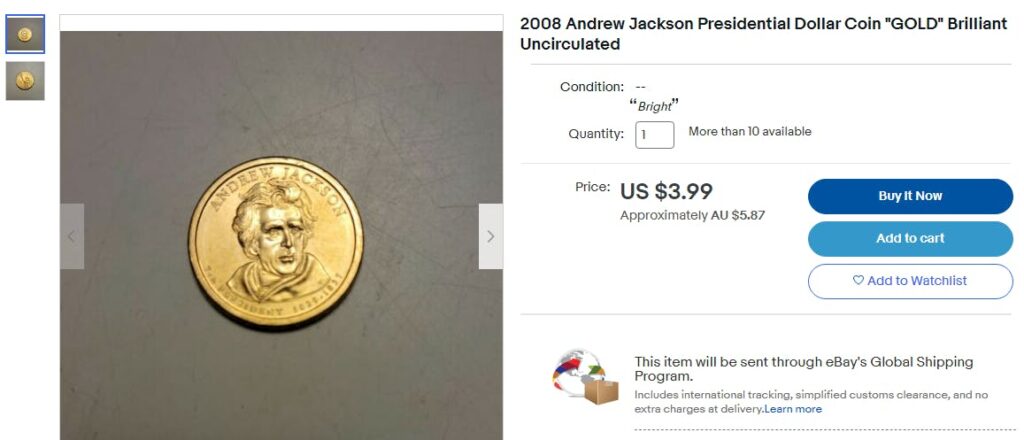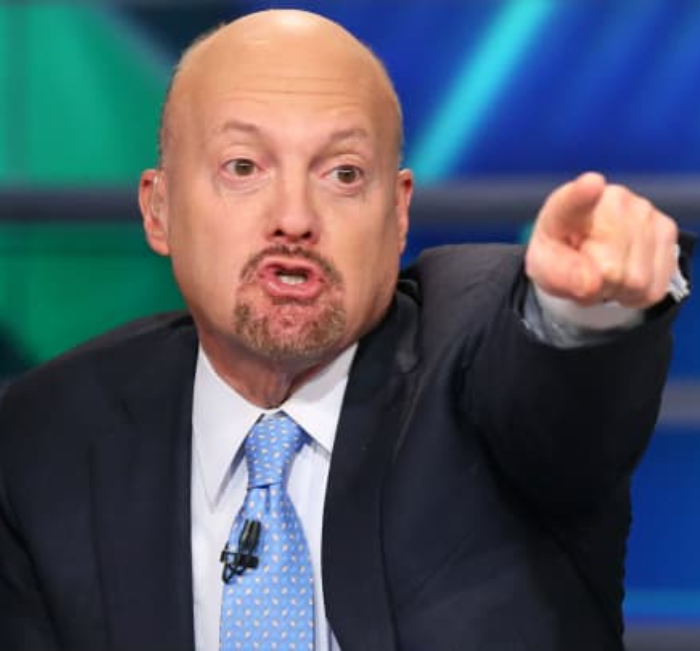Today, we’re looking at the world of rare coins. This is our first time covering this topic, and it’s a bit overdue.
I’ll be honest – coin collecting has never excited me much. I used to collect paper bills from foreign countries whenever I traveled, but never coins. Before researching this issue, I didn’t quite get the appeal.
Collecting coins has long been a popular hobby, but it hasn’t held up well with younger generations, leaving passionate collectors wondering if it’s a dying hobby.
But interestingly, the death of Queen Elizabeth II this week marks a pivotal moment for coins. The Queen’s face appeared on 33 different currencies (a world record) where she was always facing to the right (her good side!)*
And there are 29 billion British coins in circulation donning the Queen’s face.

After writing this issue, I have a greater appreciation for the aesthetic. Coins are ancient, full of history, and hold plenty of interesting stories.
Let’s take a look! 👇
*Okay, I made this up. The reason is that each King or Queen faces opposite to their predecessor. Elizabeth’s father George faced left, so Elizabeth faced right.
Table of Contents
The history of coins
Although coins are slowly becoming remnants of a bygone era, they’ve enjoyed plenty of time in the sun.

The first coins were minted using a metal known as “electrum;” a mix of the rarest and most expensive metals: gold, silver, and copper.
Archaeologists found the earliest-known electrum coins in Lydia, buried underneath the now-crumbled Temple of Artemis. They estimated these electrum coins are dated between 625 and 600 BC.

Initially, electrum coins were all worth the same amount — one-third of a stater (which translates to “Standard”). One-third of a stater was equivalent to a month’s pay for a Lydian warrior.
However, merchants found it hard to trade with these coins because the metal’s underlying value fluctuated like crazy. Some coins may have been 60% gold, while others may have only been 30-40%. There was no consistency.
Oh, and if you thought inflation was a recent phenomenon, evidence exists that the Lydians deliberately debased coins when trading with other societies. Lydian coins had ~20% less gold content than other coins from the era.

History of coin collecting
Until around year 0, coins weren’t easily accessible for common people, so they became a status symbol for nobles. Collectors displayed them or fashioned them into accessories.

Coin collecting remained within royal blood through the medieval era, with notable Kings (Louis XIV), Popes (Paul II), and Dukes (Archduke Ferdinand II) all renowned connoisseurs.

Collectors didn’t start flocking to the market until the 1950s. This was thanks to the release of standardized one tray oz gold bullion dollars — the first of which was the South African Krugerrand. It quickly became a popular way to store and trade gold.

Investing in rare coins today
We can visualize the market’s growth thanks to the industry tracker, Professional Coin Grading Service.

The PCGS 3000 is an index for the top 3,000 most expensive rare coins. According to their charts, the coin market exploded amid the pandemic. Interest in coins has waned over the past few decades, but between 2019 and 2022, the index jumped up 28%.

The exact cause of this new interest is unclear. It may be due to physical coins becoming redundant, and people feeling obligated to preserve a critical part of economic history.
It may also just be due to all the extra time we had on our hands during lockdowns.
Either way, it’s coming off a low base, but right now coin collecting is the hottest it’s been for thirty years.
Where do you find rare coins?
Coin dealers are your best bet for finding ancient and rare coins from around the globe. Shops like Austin Rare Coins, CoinWorks, and Finest Known have coins in stock worth over $10,000.

Antique stores, eBay, and coin collecting communities (like the American Numismatic Society) are also good ways to trade and learn about rare coins.
Or you can buy a metal detector and hope to get lucky! Just a few years ago, Englishman Andy Carter was strolling through a field with his metal detector when he stumbled upon a gold coin buried 10 inches below the mud.
After giving it a bit of a clean, his heart jumped. On the coin, engraved clear as day, was a leopard.

So what? Well, the only known minting of this coin was 800 years ago, in 1343. There are just two of these rare coins known to exist, and by pure chance, Carter had uncovered one of them on a random field in Norfolk.
The coin, known as the Double Leopard, was sold at auction for $185,000.
What makes a coin valuable?
An easy rule of thumb is this: if the coin is currently in circulation, it’s probably not very valuable.
The most expensive coins aren’t typically minted as limited edition collector’s items. Instead, they are often old currencies, once in circulation, that slowly became lost to time. (In the old days, when governments wanted to remove coins from the market, they melted them all down)
Other factors that influence a coin’s value:
- Age: 50+ year old coins do best
- Historical significance: Coins that provide insight into ancient societies, or represent major events in history
- Mint run: Scarcity increases as fewer coins are released into circulation
- Condition & grading: A coin graded by the PCGS is more likely to sell than an identical ungraded coin
- Gold/silver coins: They maintain value thanks to what they’re made of.
- Mistakes: Coins with cosmetic errors are always popular and can be tremendously valuable (see below)

How much are rare coins worth?
According to the PCGS index, the average rare coin is worth $70,000. Admittedly, this number is pushed up by some insane prices for the top-tier items (more on this later). But in general, expect to pay around $100 for a silver dollar, $1,000 for a gold dollar coin, and $10,000 for an ultra rare coin.

The most expensive coins in the world
1933 Double Eagle
It was 1933, and Americans had been treated to a new form of currency — the $20 gold coin. The initial supply for this coin, (called the Double Eagle) was half a million coins.
But a few months after minting, President Franklin D Roosevelt executed Order #6102, banning the use of gold as currency. As a result, officials were ordered to recall the 1933 Double Eagle and melt them down.
Naturally, some savvy Americans ignored the decree and held onto their coins. It’s estimated that 20+ were salvaged, but to public knowledge, only 13 remain.
A few decades later, one of the thirteen found its way to King Farouk of Egypt before being acquired by British coin dealer Stephen Fenton. Fenton didn’t hold it for long. In 1996, he was arrested by the US Secret Service in a sting operation. Why? Because the Double Eagle coin was still illegal to own in the United States.

After a prolonged legal battle, Fenton eventually reached an agreement with the US government; he would sell the coin, and the government would receive half the proceeds. In exchange, the US would officially mint this specific Double Eagle coin, making it the only one legally allowed to trade.
In 2002, Fenton sold the coin for $7.6 million. Last June, the coin was sold again via a private Sotheby’s auction for a monster $18.9 million.
The Flowing Hair Dollar
The Flowing Hair Dollar is one of the most famous coins in US history.
After a few years of independence, George Washington and Alexander Hamilton believed it was time to introduce an official national mint.
160,295 Flowing Hair Dollars were circulated in 1794, and each coin was 90% silver. Over time, the supply of these coins dwindled. By the late 90s, experts figured fewer than 120 remained, with the majority of them in pretty awful condition.

However, one particular Flowing Hair Dollar has emerged relatively unscathed over the last two centuries. It was graded by the PCGS and sold in 2013 for $12 million.
The Julius Caesar Assassination Coin
Julius Caesar’s assassination in 44 BC at the hands of his “friends” has become part of human folklore.
While his death was polarizing among Romans, quite a few were happy to see the end of Caesar’s reign. Some were so pleased that they decided to handcraft a gold coin commemorating the occasion. This coin depicted the daggers used to slay Caesar and the words (translated) “Ides of March” etched onto the metal.
The man responsible for minting the coin? None other than Brutus, the very same man responsible for orchestrating Caesar’s assassination.

Somehow, one of these 2,000-year-old coins found its way to a collector in superb condition. There are hardly any scratches or visible disfigurements. This coin, one of just three in existence, was sold at a 2020 auction for $4.2 million.

The official name for the coin is Q. Servilius Caepio (M. Junius) Brutus AV Aureus. So I think we’ll stick to calling it the “Caesar assassination coin.”
Some other expensive coins are:
- Umayyad Gold Dinar: An Islamic medieval gold dinar minted in 723 CE was sold for over $6 million
- Gold half eagle: An 1822 mint of the American Gold half eagle (worth $5 at face value), the only one of its kind, was sold for $8.4 million
- Brasher Doubloon: A 1787 gold doubloon worth $16 at face value was sold at auction in 2021 for $9.36 million
The most popular coins in the world
Not all popular coins are worth millions, and vice versa. However, some famous coins are just too iconic to skip.
Queen Elizabeth II coins
Queen Elizabeth II reigned for seventy years, so most Brits have only ever seen her face on their money.
But now, as King Charles ascends to the throne, the designs need to be updated.

It won’t all change right away. When the Queen came to power, coins with her father’s image stayed in circulation for 20 years after his death. Britons won’t see any new styles crop up in change until 2024, while Australians can expect King Charles coins to be minted in 2023. (Ugh, can’t we just be a republic already?)
What does this all mean for coin collectors?
Not a whole lot. The Queen reigned for so long, and was engraved on so many billions of coins, that it will likely take decades for any scarcity to set in.
However, Queen Elizabeth II coins that were already rare may get a boost.
For example, The 1957 Gold Sovereign Coin was the first mass-produced currency featuring Queen Elizabeth. At the time, over 2 million were minted, each containing 7 to 8 grams of 22-carat gold and priced between $500 – $1k.

But the holy grail of Queen Elizabeth coins is the Big Maple Leaf, created by the Royal Canadian Mint. The coin is enormous. It’s 99% pure gold, weighs 100 kilograms, and stretches 20 inches in diameter.
The coin’s face value is one million, however the underlying value of the gold is at least $4 million. Just six of these beasts were ever minted, and one of them was stolen from a German museum! The thieves were caught and imprisoned, but the coin was never recovered. Detectives believe they melted it down. It’s likely lost forever.

The Andrew Jackson Dollar
Gold Andrew Jackson Dollars were released in 2008 to celebrate the 7th US president, Andrew Jackson. However, despite their intricate details and beautiful appearance, many are worth less than a cup of coffee.
Over 60 million of these were circulated to the public and are worth exactly a dollar. The other half of the supply – another 60 million, were never entered into circulation and are slightly rarer. But even these can be found on Amazon or eBay for under five bucks.

Chinese cash
Perhaps better known as the “rare Chinese coins with a square hole,” Chinese cash is ancient coins used around the 2nd and 3rd century BC. There are hundreds of different mints of Chinese cash, but none are particularly expensive. They can usually be picked up on eBay for a few bucks each.

The Chinese coins without the square hole are actually the rarest, like the 1897 Kuang-Hsu Proof Dollar, worth $240,000.
Sacagawea Dollar
Minted in 2000, this coin never really took off with the American public. You can find most versions of it online for $10.
However, one particular mint of the dollar is valuable — the Cheerios version.
Yes, that’s right. The US Mint distributed approximately 5,500 of these Sacagawea dollars into Cheerios cereal boxes (why Cheerios? No idea.)
Anyways, these versions were cast slightly differently than the others, yet are worth ~$25,000 each.

Closing thoughts
The recent uplift in coin collectors is something of a surprise. Cashless payments have been making notes & coins increasingly obsolete since long before the pandemic. And younger generations would rather trade bitcoin & crypto than coins & notes.

But digital natives aren’t what’s going to move the market anyways. As we’ve seen with baseball cards and other asset classes, the high-end shows strength, and most of the big-hitting coin auctions have come in the past three years.
If you want to invest in coins, stick with the ultra high-end if you can. Most of the commemorative stuff minted after the 1960s is kitsch and easy to find. And don’t get too excited about Queen Elizabeth opportunities. My guess is it won’t be particularly valuable for at least the next 30-40 years.
As for finding ancient stuff? The odds of stumbling upon a truly rare coin are pretty, well, rare.
But you never know! With a metal detector and some luck, you might end up on this list 🪙








